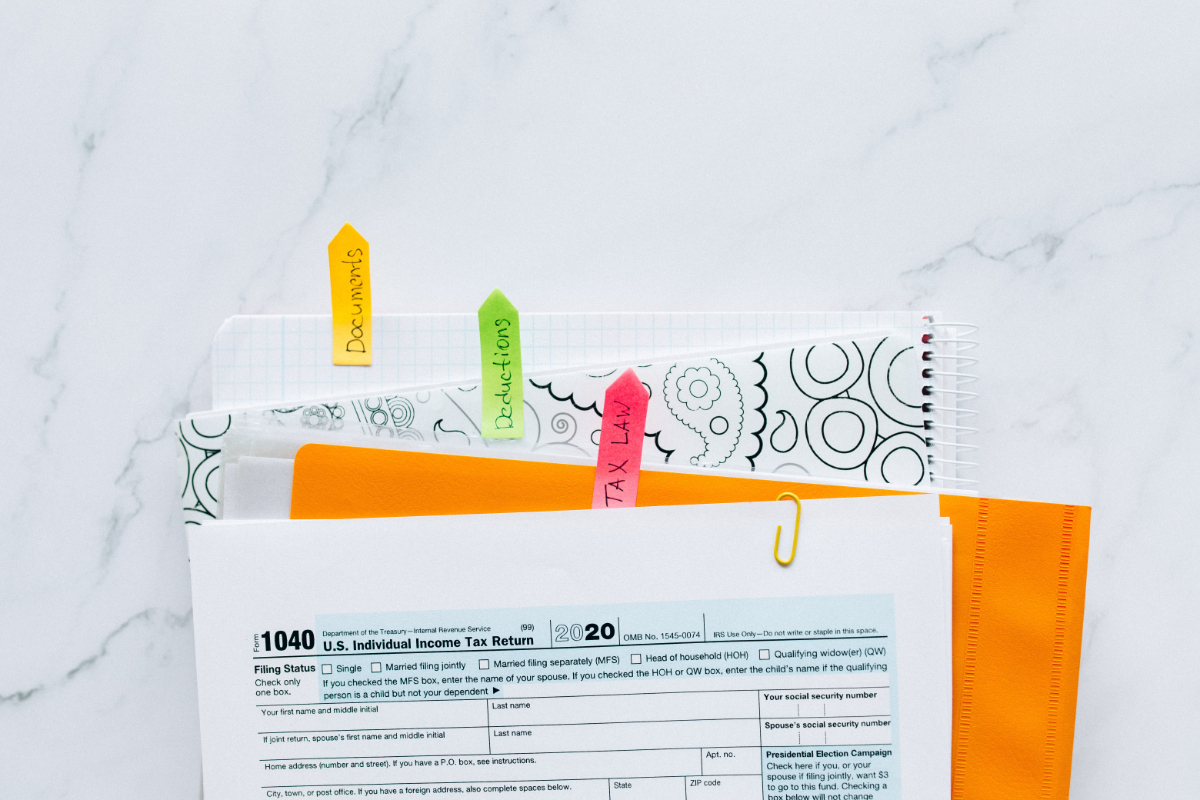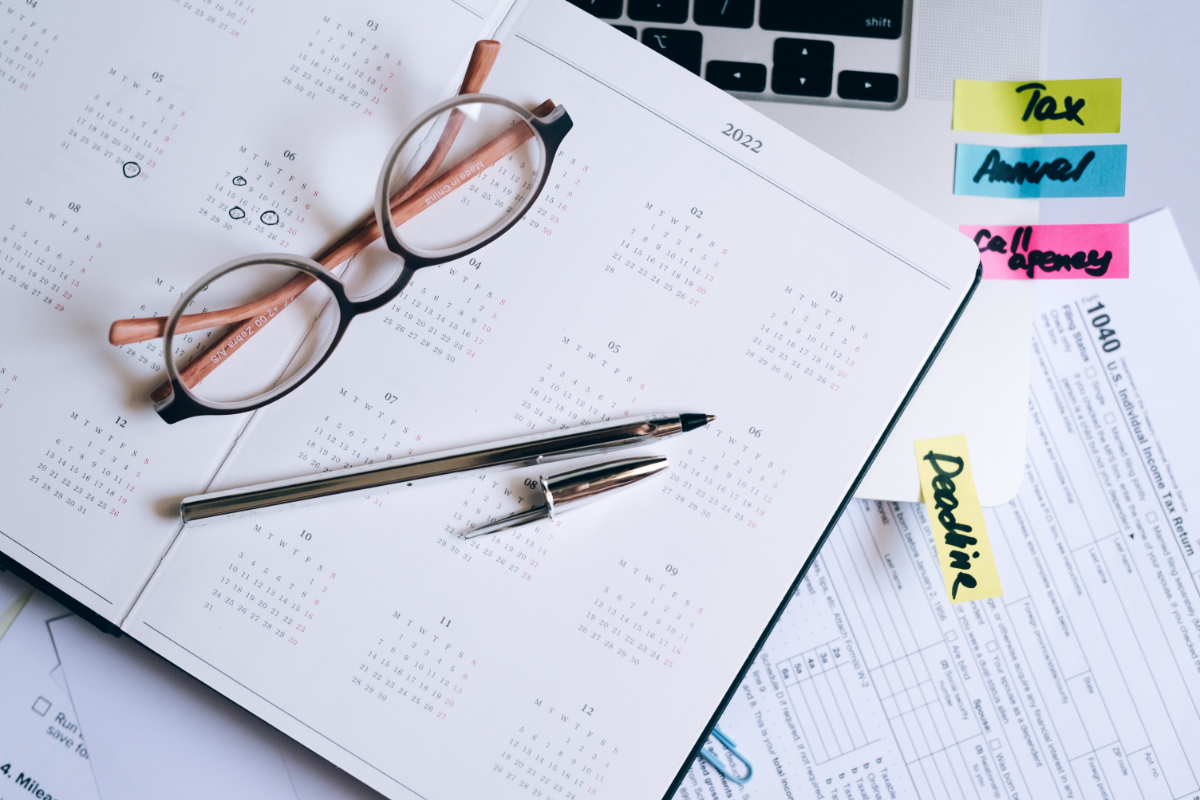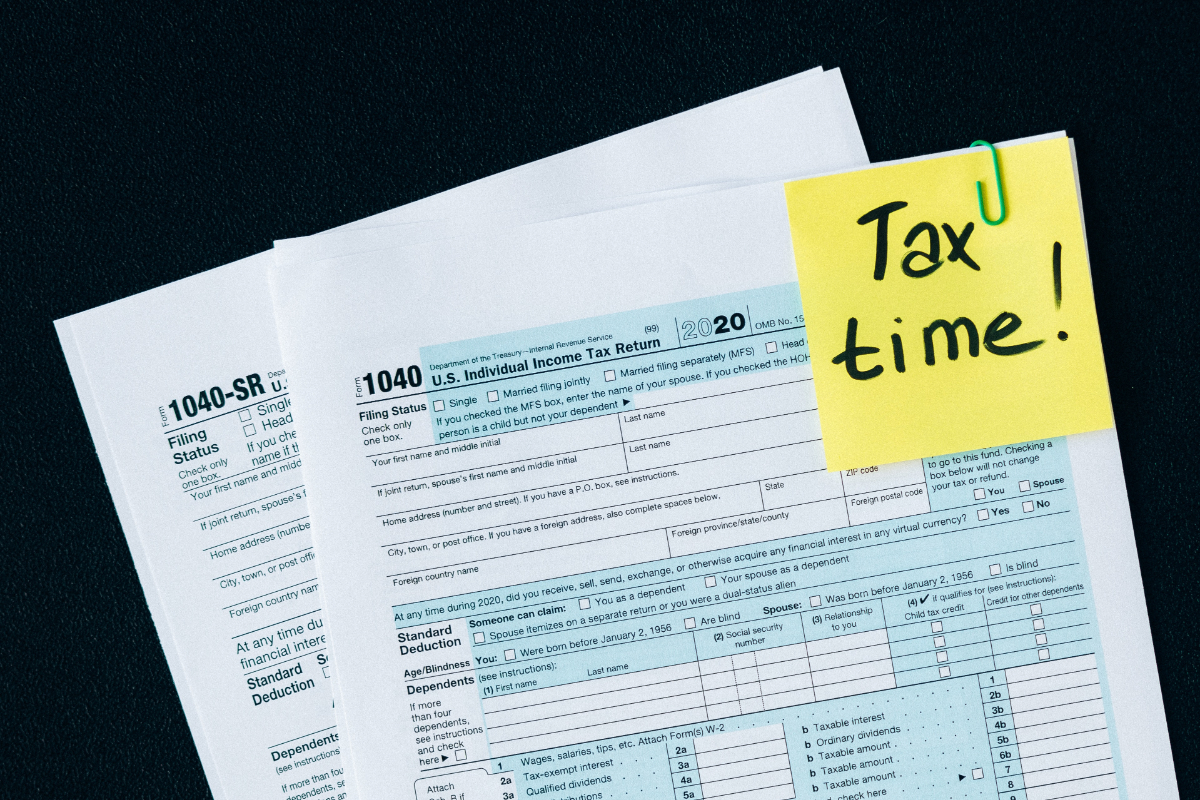Maximize Your Tax Refund: Smart Money Moves
There are some affiliate links below, but they are all products I highly recommend. For more info, view my disclosure here.
There is nothing quite like the feeling of receiving a tax refund. The excitement of getting back some of your hard-earned money can make you feel on top of the world! But it’s important to understand exactly what’s going on with your refund and how to use it wisely. That’s why this article is here – to help you understand the ins and outs of getting a tax refund, so that you can make the most out of your money!
So what does a tax refund actually mean? A tax refund is when you receive money from the IRS due to overpaying taxes in a given year. It means that you have paid more income taxes than you were required to pay, and now you are getting that extra amount back. For example, if you had $2,000 withheld for taxes in 2022 and only owed $1,500 in taxes for that year, then the remaining $500 would be sent back to you as a refund.
In addition to understanding what a tax refund is, it’s important to understand why it happens and how best to use this extra money once it arrives in your bank account. This article will provide helpful advice on both topics; by the end, we’ll have answered all your questions about tax refunds!
1. Reasons For Receiving A Tax Refund
Tax refunds are payments from the government that taxpayers receive when they’ve overpaid their taxes. This can happen for a few reasons: when taxpayers have withheld too much money from their paychecks, taken too many deductions, or received certain credits.
Receiving a refund indicates that you were able to plan ahead and save money throughout the year – but it’s important to remember that your refund is essentially an interest-free loan that you made to the government. Taxpayers should always strive to aim for a zero balance on their return, so as not to be caught off guard by any penalties from underpaying taxes.
At the same time, it’s important to plan ahead and make sure you don’t miss out on any deductions or credits you may be eligible for – because those could lead to a larger refund. Knowing the tax rules and taking full advantage of them can help taxpayers get more bang for their buck.
2. How To Manage Your Tax Refund
Once you’ve received your tax refund, it’s important to manage it wisely. The best way to do this is to make a plan for how you want to use the money. Consider what expenses you need to cover and prioritize those that are most important.
Another option is to save or invest the money, which can be done in a variety of ways. You could put the money into an emergency fund, open an IRA or other retirement account, or invest in stocks and bonds. Doing so will help your money grow over time.
Using your tax refund responsibly is key, as it can provide financial stability now and in the future. Think about what you need and how you can use the extra cash most effectively before spending it on something frivolous. That way, you can make sure your hard-earned dollars are being put to good use.
3. Benefits Of Receiving A Tax Refund
The benefits of receiving a tax refund can be substantial. For one thing, it’s free money that you’ve earned through the year and would otherwise not have access to. It could also help you save for something special, like a vacation or home improvement project. And if you use it wisely, it could even help you pay off debt or build an emergency fund.
A tax refund can also provide some much-needed financial peace of mind. By getting cash back from the government, you won’t have to worry about living paycheck-to-paycheck anymore. You’ll be able to make sure your bills are paid and that other important financial obligations are met. Plus, having additional money in the bank gives you more freedom to do things like buy groceries without worrying about running out of funds before payday arrives.
Finally, when used responsibly, a tax refund can provide a great opportunity to invest in yourself and your future. Consider using it to start an IRA or put into a college savings account for your children. You could even take a class to learn new skills or start learning how to invest in stocks and bonds with your newfound funds. No matter what you choose, investing in yourself is always money well spent!
4. How Tax Refunds Work
Understanding how tax refunds work is an important part of getting the most out of your return. The process of filing and receiving a refund involves a number of steps that can be confusing to navigate, so it’s helpful to have a basic understanding of the process before you begin.
The first step in getting a tax refund is to file your taxes. This means submitting all relevant documents, such as W-2s or 1099s, and any other required forms. Once you’ve done this, the IRS will review your submission to determine if you qualify for any deductions or credits that could result in a refund. If everything checks out, the IRS will send you a notice confirming your refund amount and providing instructions on how to receive it.
The last step is receiving your refund – which can happen in several ways depending on what works best for you. You can elect to have your refund deposited directly into a bank account, or you can request a check from the IRS. Some people prefer to receive their refunds in prepaid debit cards as well. No matter which option you choose, make sure all your banking information is up-to-date so that nothing holds up the process.
Once all steps are completed and everything is verified by the IRS, it’s time to enjoy your tax refund!
5. Tips For Maximizing Your Tax Refund
Now that you know how tax refunds work, let’s look at some tips for maximizing your refund when filing taxes. First, the earlier you file your taxes, the better. This way, you’ll get your refund sooner and can use it to pay off existing debt or invest it in a savings account. To make sure that you’re getting the most of your refund, double-check all of the deductions and credits that you qualify for. It’s also important to ensure that all of your income is being reported correctly; this will help reduce any potential problems with the IRS and make sure that you are getting all of the money back that you deserve.
Finally, consider using a tax professional if filing taxes on your own feels overwhelming. Tax professionals can review your documents and ensure that everything is filled out correctly so that there are no issues when submitting them to the IRS. Additionally, they can provide guidance on how to best utilize any tax credits or deductions available to you so that you get the biggest refund possible.
By implementing these tips into your filing process, you should be able to maximize your tax refund and have more money in hand when filing time comes around each year.
6. Risks Of Receiving A Tax Refund
Getting a tax refund can be an exciting time, but it’s important to be aware of the potential risks involved. A refund may seem like free money, but there are ways in which it could put you at a disadvantage. Here are some key points to consider when receiving a tax refund.
First of all, you may end up with less money than you anticipate. Tax refunds are simply when the government has taken too much money from your paycheck throughout the year and they have to give it back to you. It’s not extra cash, just money that was yours in the first place. Additionally, if you receive a large refund, it means that you weren’t able to use this money to pay off debt or save for the future during the year.
Lastly, getting a tax refund may hurt your chances for qualifying for certain kinds of assistance or loans. Government programs and lenders often look at your income after taxes have been paid, so having a high refund amount could lead them to believe that your take-home pay is lower than it actually is. This could make it difficult for you to get approved for certain types of aid or loans down the road.
It’s important to weigh these risks against any potential benefits before making decisions about filing taxes and how much of a refund you should expect.
7. Different Types Of Tax Refunds
When it comes to tax refunds, there are a few different types. First of all, you may be eligible for a standard refund. This is when the amount of money you paid in taxes was more than you actually owe. You can also receive a credit refund if you’re eligible for one of the credits offered by the IRS, such as the Earned Income Tax Credit or the Child and Dependent Care Credit.
Another common type of tax refund is an overpayment refund. This happens when you have overpaid your taxes due to a miscalculation or mistake on your return. In this case, the IRS will typically send you back the excess amount.
Finally, some taxpayers may be eligible for a refundable tax credit. This type of credit is applied against any outstanding federal income taxes and can reduce your total owed amount to zero or even result in a net refund being issued to you by the IRS. So no matter what kind of tax situation you find yourself in, there’s likely at least one type of refund available to help make things easier for you.
8. Situations Where You May Not Receive A Tax Refund
In many cases, tax refunds are a nice surprise come April – but they’re not a guarantee. Depending on your financial situation, you may not be eligible to receive one at all. So what are some common situations where you won’t get a refund?
First and foremost, if you didn’t owe taxes or paid too much in income tax throughout the year, then there won’t be anything available to refund back to you. This is because the government can only issue refunds for money that was previously overpaid. Additionally, if you fail to file your taxes by the deadline each year, or make any errors on your return, then it’s highly likely that any potential refund will be delayed or even denied altogether.
Lastly, if the IRS decides to audit your return and finds discrepancies on it, then this could also mean that any refund will be withheld until the audit is resolved. In such cases it’s important to respond promptly and honestly with the necessary paperwork so that the process can move along quickly and easily.
Unfortunately, these are just a few of the many instances when tax refunds aren’t available – so it’s best to keep them in mind next time filing season rolls around!
9. Alternatives To Tax Refunds
Tax refunds can be a great way to get money back from the government after you’ve paid your taxes. But there are some cases where you won’t get a refund, such as if you owe money to the IRS or if your refund is offset. So what are the alternatives?
One option is to save more money throughout the year so that you’re not relying on getting a tax refund to help with big purchases or bills. If you’re able to set aside money each month, then it’ll be easier for you to cover those costs without needing to rely on a tax return.
You can also consider taking out loans or applying for grants and scholarships if you need cash quickly. These options may require more paperwork and research, but they can provide much needed funds in situations where a tax refund would not be possible. Ultimately, doing your research and creating an emergency fund will help ensure that you have access to financial resources when needed.
10. Strategies To Reduce Your Tax Refund
When it comes to reducing your tax refund, there are a few strategies you can use. Firstly, you can adjust your withholding on your W-4 form. This form tells your employer how much of your paycheck should be withheld for taxes. If you make changes to this number, it will affect the amount of taxes taken from each paycheck and ultimately result in a lower refund.
Another way to reduce your tax refund is to track deductions throughout the year. Deductions are expenses that reduce the amount of taxable income you have. Keeping track of these deductions throughout the year can help minimize your taxable income at the end of the year, which means less money being given back as a refund.
Finally, look into contributing more to retirement accounts or other investments that are tax-deductible. This will help lower your taxable income and therefore result in a smaller refund or no refund at all. It’s important to research different types of investments and find one that works best for you and fits within your budget.






